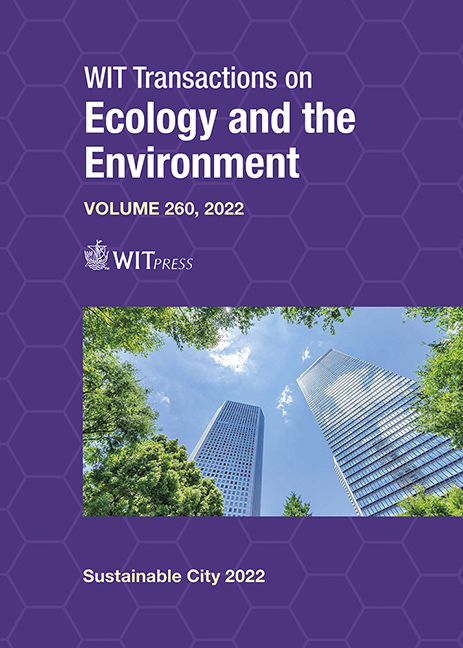WILL BIOPHILIC DESIGN BECOME ANOTHER CHECKLIST?
Price
Free (open access)
Transaction
Volume
260
Pages
9
Page Range
27 - 35
Published
2022
Paper DOI
10.2495/SC220031
Copyright
Author(s)
TOUFIC HAIDAMOUS
Abstract
The dominance of an environmental solution – in green building certifications – over the social and the economic led many scholars and practitioners to consider Biophilic Design (BD) as an innovative way of designing. Deriving from “biophilia”, the term suggests reconciling the innate human desire of nature with our built environment. In a sense, there is a deliberate attempt to merge the philosophy of BD with pre-existing standardised certification systems, confirming compliance with established norms and standards; however, the certification of healthy buildings should primarily be determined not only by the technical characteristics of materials, rules and procedures, but also by the quality of life considering occupants’ emotional, intellectual and physical well-being. The literature review in this research paper included recent scientific publications about Biophilic Design, sustainability and green building certifications. To narrow down the selection criteria of references, researches that are of empirical nature and contextualised in Dubai were selected; moreover, the qualitative investigation in this research was enhanced by a pedagogical application in which students enrolled in the course “Building Systems and Codes” at the American University in the Emirates proposed ways to integrate Biophilic Design at buildings and urban scales. The findings of this research demonstrate that the concept of Biophilic Design is being considered in green building certifications like LEED, WELL, Fitwel, Living Building Challenge Certification and BREEAM. While the term “biophilic” was recently coined, its principles and tools were already previously implemented in architecture, as example in the famous Falling Water by Frank Lloyd Wright. Interpretation of Biophilic Design in formalisation and standardisation remains challenging to achieve human-centred design. The quest to measure Biophilic Design firstly, in construction costs and, secondly, humans’ well-being adds another layer of complexity. The critical approach of “biophilia” may be where the real value is.
Keywords
Biophilic Design, green building certifications, sustainability, design education, Dubai





